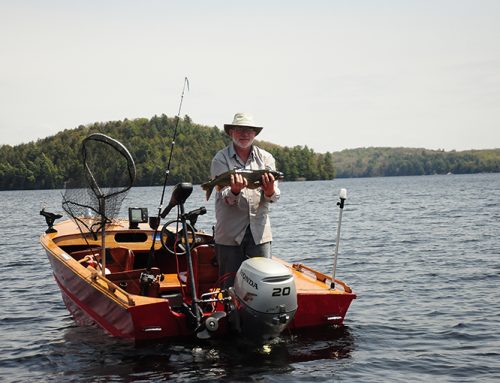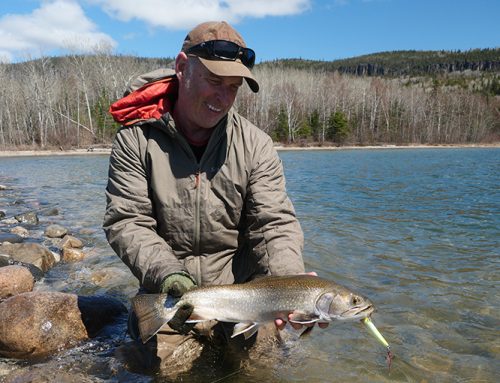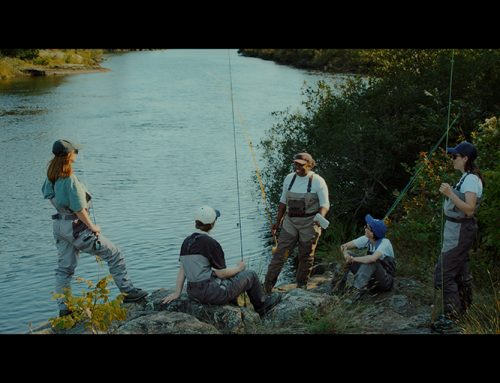
One of the things about being keenly interested in a pursuit like angling for many years is seeing things change. When I started my angling journey, as a kid in the 1970s and early 1980s, fishing gear was quite basic.
There was monofilament line, which was already a giant leap from the Dacron and other products that came before. Spinning reels were around, but they were basic, and a bit on the heavy side. The industry entered hyper speed in the 1980s, with a raft of new inventions and improvements.
Some changes didn’t last so long.
Remember those reels that had all the different settings for drags that you change with a flip of the dumb? Or fishing lines that were scent impregnated? They weren’t bad ideas; they just didn’t catch on with most anglers. In a lot of ways anglers are like fish. We like flashy things and sometimes make impulsive choices. Yet there are many of us that are OK wth a few old-school items, primarily because they work.
The firsts
My first reels were spinsters, with a closed-face unit and push-button release. They were not always the smoothest thing to fish with but did the job. They still do. My earliest rods were fibreglass, with steel guides. Every once and a while, I’ll see an old-school fibreglass rod at a pawn shop or in a boathouse. They are fun to look at, but I can’t imagine using one today. I have several more modern fibreglass rods that are great for trolling and fishing crankbaits. The relative softness and near indestructibility of fibreglass stands in stark contrast to the modern graphite rod. Sometimes tough and whiny will do the job.
The basics remain
Needless to say, much fishing gear is radically better than old-time gear. The basics of angling, however remain unchanged. You have to fool a fish, hook it, and then bring it to hand. The actual simplicity of that act is sometimes forgotten in the noise of the latest and greatest.
This was brought home to me recently when I watched a YouTube video of an Inuit women ice fishing. She had a line on a four-inch stick. A simple silver spoon was her lure and she lay on the ice looking down the hole. She managed to land 27 char this way in a few hours. No tent, no electronics, and just one line with no rod. A humbling thing to watch.
When I first began looking for lake trout in deep, open water, I didn’t know the old school tricks. Then my grandfather Ora Ellis came for a visit from southern Ontario, and he brought with him. couple of steel line rigs. These outfits had what I came to know as banjo reels. The large reel had wire line and a crude braking system. The “rod” such as it was, consisted of a short, thick metal wire with a spring on the end.
Gramps used a heavy weight he’d made to get the wire down faster, and there was a three way with a heavy monofilament leader. On that went a well-polished Williams Wabler. In the boat, we would begin the troll and then slowly let line off the reel. Once the weight was on bottom, we engaged the brake and started fishing. Strikes were sharp, due to the lack of stretch from wire. It was surprising how well a trout caught on wire line with four-ounce weight could fight! It was more of a tug-of-war. Yet that rig could catch lake trout amazingly well. I haven’t used one for a long time, but I have no doubt if it was rigged up and taken out on Lake Superior this summer, trout would be landed.

Tried-and-true lures
Certain lures have stood the test of time and are all but unchanged. These are the ones I don’t ever seem to have enough of. When I see vintage versions of these lures, polished and well-used for sale, I cannot resist. My wallet opens like a dandelion on a sunny day. The list of these tried-and-true lures is long, but a few that come to mind are the Eppinger Dardevle, Williams Wabler, Mepps Aglia, Acme Little Cleo, Rapala Floating Minnow, Lucky Strike Half Wave, Al’s Goldfish, and Suick. There are also a few lures that are difficult to find now, like the Delfin Alligator, which keep places like eBay buzzing. Those are just my classic favourites. My bet is everyone reading this column has a few of their own.
Fly fishing classic in itself
Finally, I’d be remiss to talk about the simpler, classic things of angling and not discuss fly fishing. It is where many of us start and a lot of us end up. Fly fishing is one of the most ancient forms of angling and the one that’s changed the least. Sure, the bamboo rods of one hundred years ago could not throw a line like a graphite rod does now, but it did much the same thing in the same way. Fly reels have become lighter, with better drags and machining, but they still hold line the same as an old Hardy.
Every year, when I’m guiding, there are one or two fly anglers with equipment that is 60 or 70 years old and better. The drags are crude, the lines not as supple, but they can still wrangle trophy trout with the best of them. It is such a joy to watch an older angler catch a fish on a rod and reel he or she used as a kid. There is a direct connection between the past and the present that cannot be duplicated.
No matter how you like to fish, there will come a time when something you’re using becomes a classic, and a go-to. It’s just another joy of angling.
Gord Ellis is a Senior Editor, journalist, radio broadcaster, photographer, and professional angler based in Thunder Bay. Reach Gord at: [email protected] and @GordEllis on Twitter.

Originally published in the April 2022 issue of Ontario OUT of DOORS






Leave A Comment